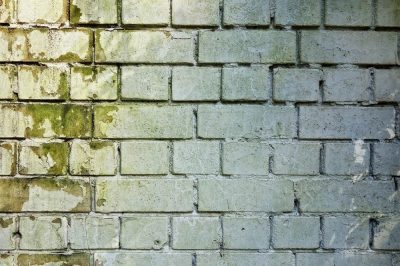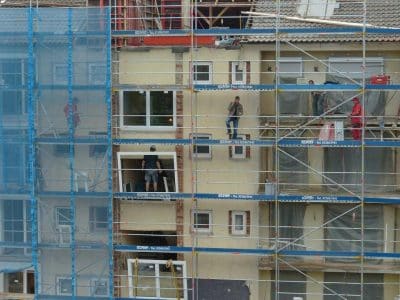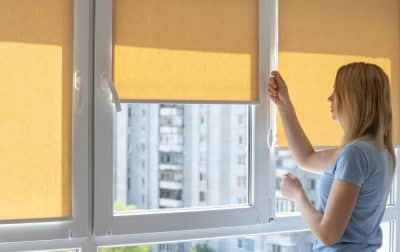
Water damage is one of the most frustrating and costly problems a homeowner can face. From soaked carpets to musty odors and warped wood, it disrupts daily life and often leaves you unsure where to start. Worse, it can lead to long-term structural issues or health risks like mold exposure. If you’ve ever dealt with sudden leaks, burst pipes, or creeping dampness, you know how stressful it can be.
In this blog, we’ll explore the common causes of water damage and how to fix them effectively. You’ll learn actionable steps to protect your home and discover how relying on experts like Absolute Maintenance & Consulting, a reliable restoration company, can give you confidence in restoring your property and minimize future risks.
Understanding Water Damage and Its Impact on Your Property
Water damage isn’t just a surface problem—it impacts your home’s structural integrity and your family’s health. When water infiltrates your property, it causes materials like wood, drywall, and insulation to break down. Over time, this leads to costly repairs and even safety hazards. It’s essential to address water damage quickly to avoid compounding the issues.
Here’s how water damage can affect your home:
- Structural Weakness: Prolonged exposure causes floors, walls, and ceilings to deteriorate, creating safety risks.
- Mold and Mildew Growth: Damp conditions promote rapid mold growth, affecting indoor air quality and health.
- Decreased Home Value: Persistent damage reduces your property’s resale value, making it less appealing to buyers.
- Health Hazards: Contaminated water or mold spores can lead to respiratory issues and allergic reactions.
Recognizing the impact of water damage is the first step in managing it effectively. Proactive measures and professional restoration services can protect your home from further harm.
Common Sources and Causes of Residential Water Damage
Water damage in homes often originates from everyday issues that escalate over time or sudden events that catch you off guard. Understanding the main causes helps you identify and address vulnerabilities before they lead to costly repairs. Let’s dive into the most common sources of residential water damage and how they impact your property.
Plumbing System Failures and Burst Pipes
Plumbing issues are among the leading causes of water damage in residential settings. Leaky pipes, loose fittings, or worn-out plumbing systems can release water into walls, ceilings, or floors, often going unnoticed until significant damage has occurred. Burst pipes, especially during freezing temperatures, are a major culprit. When water inside the pipes freezes and expands, the pressure causes the pipe to rupture, resulting in flooding.
Failing to address these problems promptly can lead to long-term structural damage and mold growth. Regularly inspecting and maintaining your plumbing system, such as replacing old pipes and securing connections, minimizes the risk of unexpected failures. Insulating pipes during winter can prevent freezing, a common issue in colder climates.
Weather-Related Issues and Natural Disasters
Weather events like heavy rain, snowmelt, and storms can quickly overwhelm a home’s defenses. Torrential rain can seep into cracks in walls or foundations, while high winds may damage roofs, allowing water to penetrate. Flash floods or prolonged flooding from hurricanes or tropical storms often cause widespread damage to basements and ground-level spaces.
Natural disasters are harder to predict or prevent, but proactive measures can reduce their impact. Reinforcing your roof, improving drainage around your home, and installing sump pumps are crucial to managing water-related risks during extreme weather events. Immediate action after storms, like checking for roof leaks or pooling water, prevents more extensive damage.
Appliance Malfunctions and Leaks
Appliances designed to make life easier can become sources of water damage if they malfunction. Washing machines with cracked hoses, dishwashers with poor drainage, or refrigerators with leaking water lines can release water over time, damaging floors, cabinets, and subflooring. These issues are often slow to develop, making them easy to overlook until visible damage appears.
Routine maintenance, such as inspecting hoses and seals, can prevent appliance leaks before they happen. Another way to minimize risks is to upgrade older appliances with modern ones with built-in leak detection technology. Installing water-detection sensors near appliances adds an extra layer of protection, alerting you to leaks early on.
Foundation Problems and Structural Vulnerabilities
Your home’s foundation is crucial in keeping water out, but cracks or weak points in the structure can allow water to seep inside. Poor drainage systems, like clogged gutters or downspouts that don’t direct water away from the house, worsen the problem. Over time, waterlogged soil pressures foundation walls, leading to more significant cracks and leaks.
Ignoring foundation issues can lead to severe consequences, including basement flooding and compromised structural integrity. Sealing cracks with high-quality materials and ensuring proper drainage around your home is essential for preventing foundation-related water damage. Regular inspections by a professional can identify vulnerabilities early and save you from costly repairs.
Essential Steps and Solutions for Water Damage Restoration

Water damage restoration involves several steps to minimize harm, repair the damage, and prevent future problems. Acting quickly after detecting water damage is critical to mitigating its effects. Here, we’ll outline effective restoration methods that protect your home and ensure a smooth recovery process.
Immediate Response and Emergency Mitigation Procedures
The first few hours after water damage occurs are crucial. Quickly stopping the water source, whether a burst pipe or a leaking appliance, prevents the damage from spreading. Turn off the main water supply and remove valuables, furniture, or electronics from the affected area. Ventilate the space using fans or open windows to reduce humidity and slow mold growth.
In severe cases, contact a professional restoration company immediately. They can assess the extent of the damage and begin mitigation procedures, such as extracting standing water and preventing further moisture infiltration. Prompt action ensures the damage doesn’t escalate into more expensive repairs.
Professional Water Extraction and Drying Techniques
Restoration professionals use advanced tools to address water damage efficiently. High-powered pumps and vacuums remove standing water, while industrial-grade dehumidifiers and air movers eliminate excess moisture from the air and surfaces. These techniques prevent mold and mildew from thriving, especially in hidden areas like walls or under floors.
Engaging experts, like a reliable restoration company, ensures comprehensive service. Their team employs cutting-edge technology to extract water, dry affected areas, and protect your property from further harm. By addressing moisture at its source, they help you avoid long-term issues.
Cleaning, Sanitization, and Mold Prevention Methods
After removing water, thorough cleaning and sanitization are necessary to eliminate contaminants and odors. Floodwater or water from burst pipes may carry bacteria, dirt, or chemicals that require disinfection. Professionals use antimicrobial solutions to clean surfaces and prevent health hazards.
Preventing mold is a priority during restoration. Damp environments create ideal conditions for mold growth, which can start within 24-48 hours. Mold inhibitors applied to affected areas reduce the risk of future infestations. Regular inspections ensure no hidden moisture pockets remain, keeping your home safe.
Structural Repairs and Material Replacement Guidelines
Water damage often requires repairing or replacing damaged materials to restore your home. Wet drywall, warped wood, or soaked insulation must be removed immediately to prevent further issues. Flooring, especially carpets and laminates, may need replacement if they absorb excessive moisture.
Hiring experienced contractors ensures repairs meet safety standards and maintain the home’s structural integrity. From replacing rotted beams to patching walls and repainting, restoration professionals can return your home to its original condition. Addressing these repairs promptly also helps preserve your property’s value.
Preventing Future Water Damage and Protecting Your Home

Preventing water damage is simpler and less costly than repairing it. Regularly check your plumbing, roof, and foundation for signs of wear. Keep gutters clear and ensure water flows away from your home. Small steps like installing water detection sensors can make a big difference in catching leaks early.
Relying on professional services adds an extra layer of protection. Experts can identify risks and provide effective solutions. With their help, you can safeguard your home and enjoy long-term peace of mind.








